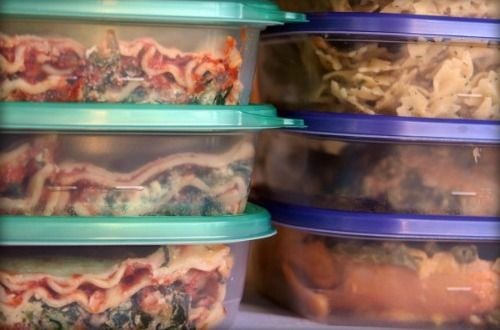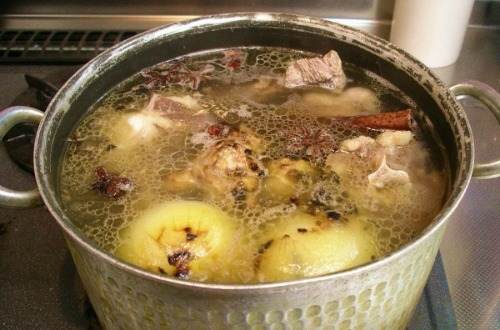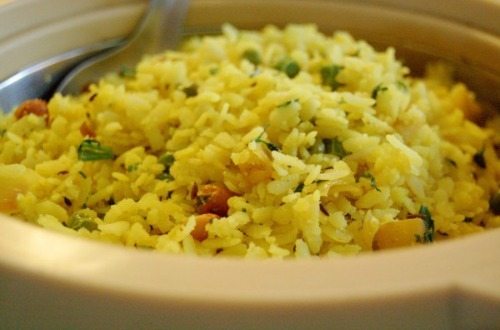Ahmad Mudhakkir
29th August 2016 - 6 min read
When we were little our parents would always tell us to finish our food. But the truth is that sometimes we really can’t finish everything on our plate. Whether it’s unexpected portion sizes in restaurants, surprise extra food, or takeaway baggies from a kenduri that our auntie insisted we take home, we will one way or another, end up with leftovers.
Throwing away food sounds harmless enough, right? But once you learn that Malaysians waste up to 8,000 tonnes of food a day (food that could have instead fed six million people), you may start thinking twice about trashing that doggie bag. Using up leftovers to their full potential is not only the mark of a resourceful cook; it can save you a few meal expenses as well. Here are our tips for getting the most out of your leftovers.
Know How to Keep Them
Cooked food spoils at different rates compared to just raw ingredients. Therefore, they should be treated differently as well. A good rule of thumb to follow is that cooked food generally last a maximum of four days in an airtight container in the fridge. However, not all food last that long, if it smells funny, doesn’t look right, or acquires a completely different texture even before the four days, throw it out. If you really want to get precise you can use StillTasty, a webapp that tells you how long what food lasts and how best to keep them.

If you don’t like worrying about shelf life, you can just cover your leftovers in foil or plastic wrap and stuff them in the freezer. Most foodstuff can last indefinitely in there as long as you keep the temperature below 4°C and your freezer doesn’t suddenly lose power.
Pay Attention to Moisture
Reheated leftovers typically don’t taste right because of the way we reheat them. Microwaved fried bihun for example will come out tough and dry. This happens because while it is in storage, it loses a lot of its moisture by drying. You can prevent the toughness from happening by covering your bowl of bihun (or other leftovers prone to drying out) with a damp paper towel. Reheating will turn the water in the towel into steam and rehydrate the food in the bowl, correcting the moisture content.

In fact, if you really want to reheat things that you know is vulnerable to moisture loss, you can reheat them in a steaming basket instead. Of course, this may be a teenie bit more work than you care to do, but the results cannot be argued with.
Conversely, for leftovers that suffer from too much moisture, it’s possible to revive them by using your oven. Stale crisps, popcorn or banana chips can be spread out onto a rack and heated up in the oven to get them nice and crunchy again.
Reuse Stews and Soups as Flavour Boosters
Often that curry dish or tom yam you made will have all the goodies fished out of them, leaving you with a big pot of tasty liquid leftover. These can be kept frozen in the freezer and used again when you make your next batch of the same thing. As in, you can use frozen tom yam in the new tom yam you’re making to power up the taste.

You can also drop some bits of frozen stew into your stock for example, to up the flavour quotient of the dish. If your leftovers are not enough to do either of those things, you can thicken the mixture with coconut milk or buttermilk and marinate your meats in them. Another way is to mix it with your flour batter for a taste injection into your fried food. Think of frozen liquid leftovers as delicious flavour grenades, ready to go when you need a bit more bang in your bowl.
Stir Fry Your Starches
Having plain rice or noodles as leftovers can be a bit of a drag, since even if you reheat them, they’re depressingly bland on their own. The trick to waking up plain starches is to pair them with your other leftovers. Let’s say you have some roast chicken or other proteins chilling in the fridge. Invite them to the party and fry them along with the rice.

Indeed, fried rice and fried noodles are a great way to use up bits of chicken or beef that’s not enough to make a meal by themselves. Proteins spread out in crispy bits of rice and flavoured with the thawed leftover liquid from before not only makes for a filling meal, it uses up leftovers in a delicious way and is super quick to make as well. Other starches benefit from frying too, such as French fries, potatoes, or any type of pasta.
When In Doubt, Flatten It Out
We’ve dealt with dry food, wet food, proteins, and starches. But what about bread, you ask? The kinds of leftover bread we usually get are things like pizza, sandwiches, or murtabak, right? These kinds of food don’t really lend themselves well to steaming, stir-frying, or a trip to the oven. What you can do instead is press them into hot sandwiches or panini.

If you have a panini press, sandwich toaster, or even a waffle iron, you can place your favourite bread and filling in it and toast away. The heat will gently wake up the filling and crisp up the outside bread as well, giving it a crunchy crust. You can fold up pizzas and hot-press them into makeshift calzones this way too. Yum.
If you don’t have a similar device, you can wrap the sandwich carefully in aluminium foil and use your clothing iron. You’re guaranteed to never throw away your sandwiches ever again.
Having leftovers is a good thing, as it turns out. Sometimes your revitalised creations may even turn out to be better than the something newly made. Do you have any other tips on how to get the best out of your leftovers? Share them with us in the comments section below!
Images via Wikimedia Commons, Kathleen Franklin, and Got Chocolate.








Comments (0)